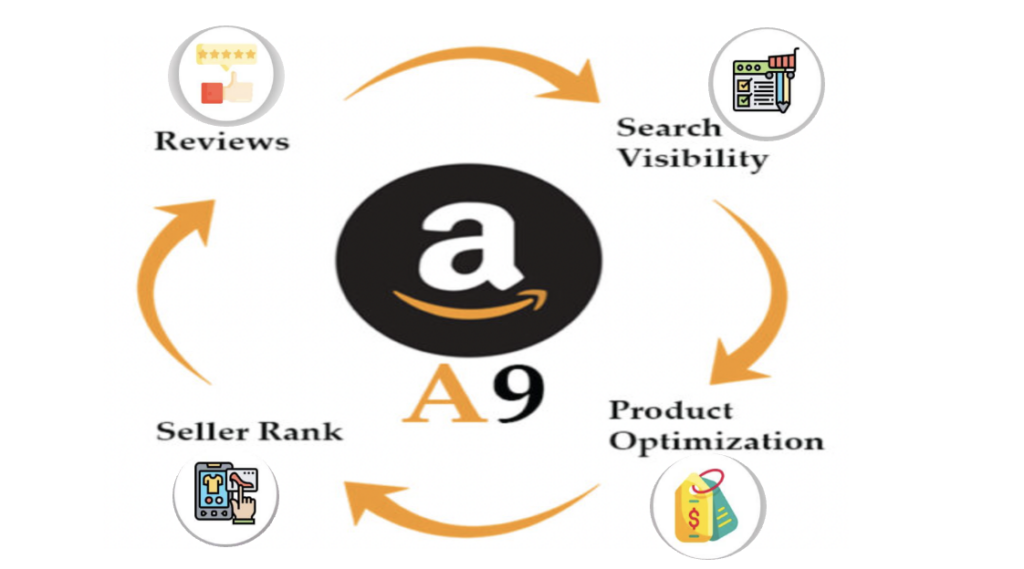Amazon is undoubtedly one of the largest online marketplaces in the world, with a vast selection of products available for purchase. The platform’s algorithm plays a crucial role in managing everything from product searches to their ranking in search results. This algorithm not only helps customers find their desired products quickly and easily, but it also helps sellers increase visibility and sales. However, many new and existing sellers are unsure about how the algorithm works and which factors affect it.
If you’re one of them, don’t worry; this post is here to help. In this article, we will discuss Amazon’s ranking algorithm and its most important factors. We will also provide some strategies that can help you master Amazon’s algorithm to improve your product’s ranking in search results.
What Is The Algorithm That Determines Product Ranking?
Similar to other online marketplaces, Amazon uses a search engine to manage and display products on its platform. Amazon’s search engine, the A9 algorithm, is responsible for ranking and displaying products in response to shoppers’ search queries. The algorithm takes various factors into consideration when ranking products, including customer reviews and ratings, sales history, product listing optimization, pricing, and more.
Unlike traditional search engines such as Google, Yahoo, and Bing, Amazon’s search engine is product-focused since the platform is solely dedicated to selling products. This means that searching for a specific product doesn’t require complex keyword phrases. Nonetheless, keywords still play a crucial role in the product ranking process.
How Does It Work?
When you add a new product to Amazon as a seller, it receives an initial rank based on various factors, such as product category, keywords, and your sales history. The Amazon A9 algorithm then constantly tracks the product’s performance in the marketplace, taking into account metrics like sales velocity, customer reviews, and ratings. This allows for dynamic adjustments to the product’s search ranking.

The ranking of products on Amazon is subject to change at any time due to the algorithm’s real-time adjustments. Sales volume is the most important factor in product ranking, with frequently purchased products being more likely to rank higher in search results.
It’s important to note that Amazon’s ranking algorithm undergoes periodic changes, with the new A10 algorithm being the latest. As a seller, it’s your responsibility to keep up with current eCommerce trends and the differences between the A9 and A10 algorithms to optimize your product’s ranking.
A9 Vs. A10 Algorithm
The Amazon A10 algorithm was launched in 2021 as an updated version of the A9 algorithm. The main difference between the two is that A10 places greater emphasis on customer experience, while A9 primarily focuses on advertising, keyword consistency, and text matching. Despite this update, Amazon has not officially announced a change from A9 to A10. The purpose of the new algorithm is to provide relevant search results and prevent unqualified product listings from ranking high for specific keywords.
A product’s sales velocity remains a crucial factor for both A9 and A10 algorithms, but with A10, products with organic sales generated from clicks, keywords, and SEO will have a greater impact on rankings than those generated from advertising or PPC.
While some factors have been adjusted, several factors remain the same for both A9 and A10 algorithms.
1. Conversion Rate
A product’s ability to convert visitors into customers is a key determinant of its success on any platform. Higher conversion rates often lead to higher rankings for the product, as the platform’s algorithm recognizes its popularity among users.
2. Keywords
Optimizing product listings by incorporating relevant search terms and keywords has always been crucial in ensuring a successful search engine ranking. When your listing is optimized effectively, your product will appear more frequently at the top of the search results.

Additionally, this increases the number of clicks on your listing, which in turn can boost your organic ranking for those specific keywords.
3. Reviews
When it comes to making a purchase decision, social proof is often the first thing that catches a shopper’s attention. Established customers’ reviews play a critical role in building trust and providing social proof for new customers. In addition, positive reviews can significantly impact a product’s ranking and visibility, making it essential to prioritize customer satisfaction.
7 Factors That Boost Your Amazon Ranking
Below are a few of the factors that influence a product’s search ranking on Amazon:
1. Sales Velocity
Sales volume and velocity are two of the most important factors that affect a product’s ranking on Amazon’s search results page. To improve your product’s ranking, it is essential to generate sales quickly.
This can be achieved by running promotional campaigns or offering time-limited deals to attract more customers. If you are aiming to master the Amazon A9 and A10 algorithms, increasing your sales volume and velocity should be a top priority.
2. Pricing Strategy
Setting a competitive price for your product is crucial for its ranking on Amazon’s algorithm. The algorithm compares the prices of similar products within the same category and products with competitive prices have a higher chance of ranking higher in search results.
To determine a competitive price for your product, it’s essential to check out the listings of your top competitors. As pricing is the first thing a shopper notices on a product page, it’s important to set the right price for your product.
3. Keywords
When a seller lists a product on Amazon, the platform’s algorithm scrutinizes the product’s keywords for relevance. Amazon prioritizes relevant keywords because they cater to customers’ search intent.
If you list your products with appropriate and fitting keywords, only customers who use those keywords in their search for similar products will see your products.
4. Inventory
If you are an Amazon seller and have successfully optimized your product listing to achieve a high sell-through rate and ranking, it is important to ensure that your inventory levels are also maintained. If your inventory is low or out of stock, it can negatively impact your product ranking.
This issue is particularly relevant for FBA sellers, who need to regularly replenish their inventory and ship it to Amazon’s fulfillment centers to avoid running out of stock. FBM sellers may have more flexibility in managing their inventory, but they still need to monitor it to maintain a consistent supply of products for customers.
5. Product Listing Optimization
Optimizing your product listing is crucial not only for higher rankings but also for increasing visibility in the Amazon marketplace. Title, description, and keywords are all important elements that fall under Amazon SEO, which is essential to properly optimize a product listing. Thus, your primary goal should be to optimize your listing, and Amazon’s algorithm will take care of the ranking aspect.
6. PPC Campaigns
One way to quickly increase your product’s visibility on Amazon is by utilizing paid marketing methods such as PPC campaigns and sponsored ads. These techniques allow your products to appear at the top of search results for specific keywords. However, it is crucial to bid strategically on high-volume keywords or phrases as each click made by visitors or customers will cost you money.
7. Fulfillment Method
To rank high in Amazon search results, the fulfillment method you choose for your products is a crucial factor. Amazon provides two fulfillment options for sellers: FBA and FBM.
As Amazon takes care of the FBA method, products fulfilled by FBA have a better chance of ranking high in the search results. In contrast, the FBM method is fulfilled by sellers themselves, and it can be challenging to guarantee a high ranking for their products.
Strategies You Can Use To Improve Your Ranking
Below are some strategies you can start using today to boost your ranking on Amazon:
Know Your Audience
Understanding your target audience is a crucial factor in optimizing your product listing on Amazon. Proper keyword targeting can help you reach your intended audience and increase visibility.
For instance, if you are selling supplements, your target audience would likely be fitness enthusiasts and gym users. However, if you are selling products for babies parents would be your target audience. Knowing your target audience is also essential for effective Amazon SEO and can impact your product’s ranking in search results.
Know Every Detail of Your Product
Ensuring that you are well-informed about the product you plan to sell on Amazon is crucial. Shoppers are often meticulous and want to have all the necessary details about the product before making a purchase.
These details may include product size, weight, compatibility, age restrictions, and more. Amazon provides these sections when sellers list their products, and it’s important not to overlook them. Neglecting these sections can cause shoppers to prioritize other products over yours, ultimately leading to lost sales.
Watch Your Competitors
When you list your product on Amazon, you enter into a competitive market where there are many sellers offering similar products. To stand out, it is crucial to evaluate your competitors and analyze their product performance. This will help you understand why your target audience prefers their products over yours.
By comparing and monitoring similar products, you can identify the strengths and weaknesses of your product and make necessary improvements to offer a better option to your target audience at a competitive price. This is a proven strategy that many sellers use to boost their rankings on Amazon.
Build Trust With Your Customers
Developing a loyal customer base on Amazon is a valuable asset for any seller. Building trust with customers is crucial for establishing such a customer base. Offering quality products and avoiding clickbait tactics is a great way to start.
When customers receive excellent products and services, they are more likely to return for more purchases. Once they become satisfied customers, you can encourage them to leave reviews, including video reviews, to provide social proof for new customers.
Wrap Up
In conclusion, understanding how Amazon’s algorithm works is crucial for any seller looking to succeed on the platform. By optimizing your product listings with relevant keywords, providing high-quality customer service, keeping your inventory in check, and using paid advertising campaigns, you can improve your product’s visibility and ranking on Amazon’s search results.
Also, it’s important to keep an eye on your competition and build a loyal customer base through offering quality products and encouraging customer reviews. With these strategies in mind, you can navigate Amazon’s algorithm and achieve success as a seller on the platform.





Leave a Comment